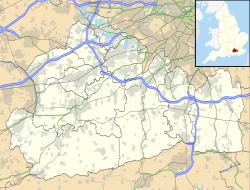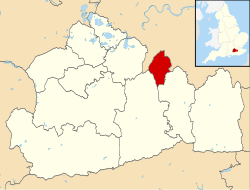Decline and redevelopment
At its peak in 1971, the hospital had 1,587 beds and treated 1,438 patients. By 1975, however, the number of beds had fallen to 1,200 and patient numbers continued to decline until closure. The hospital officially closed in 1997, although the Wolvercote Clinic and a small psychiatric unit known as Horton Haven remained open. The hospital was sold for development in 2002 and most of the buildings were subsequently demolished. The chapel, administration block, water tower and some wards and villas were retained for conversion and incorporation into a new village development on the site. [2]
As of 2009 most of the site had been redeveloped as housing and apartments. The water tower, chapel and former superintendent's residence were empty awaiting conversion while the Horton Haven and original gate lodge remained in use for psychiatric treatment. By October 2012, the water tower had been demolished and a small commemorative plaque stood on the site. The superintendent's residence had become dangerously derelict and the chapel was empty but kept maintained and secured by its owners Epsom and Ewell Borough Council. The Horton Haven continues to provide psychiatric services on the site. [6]



